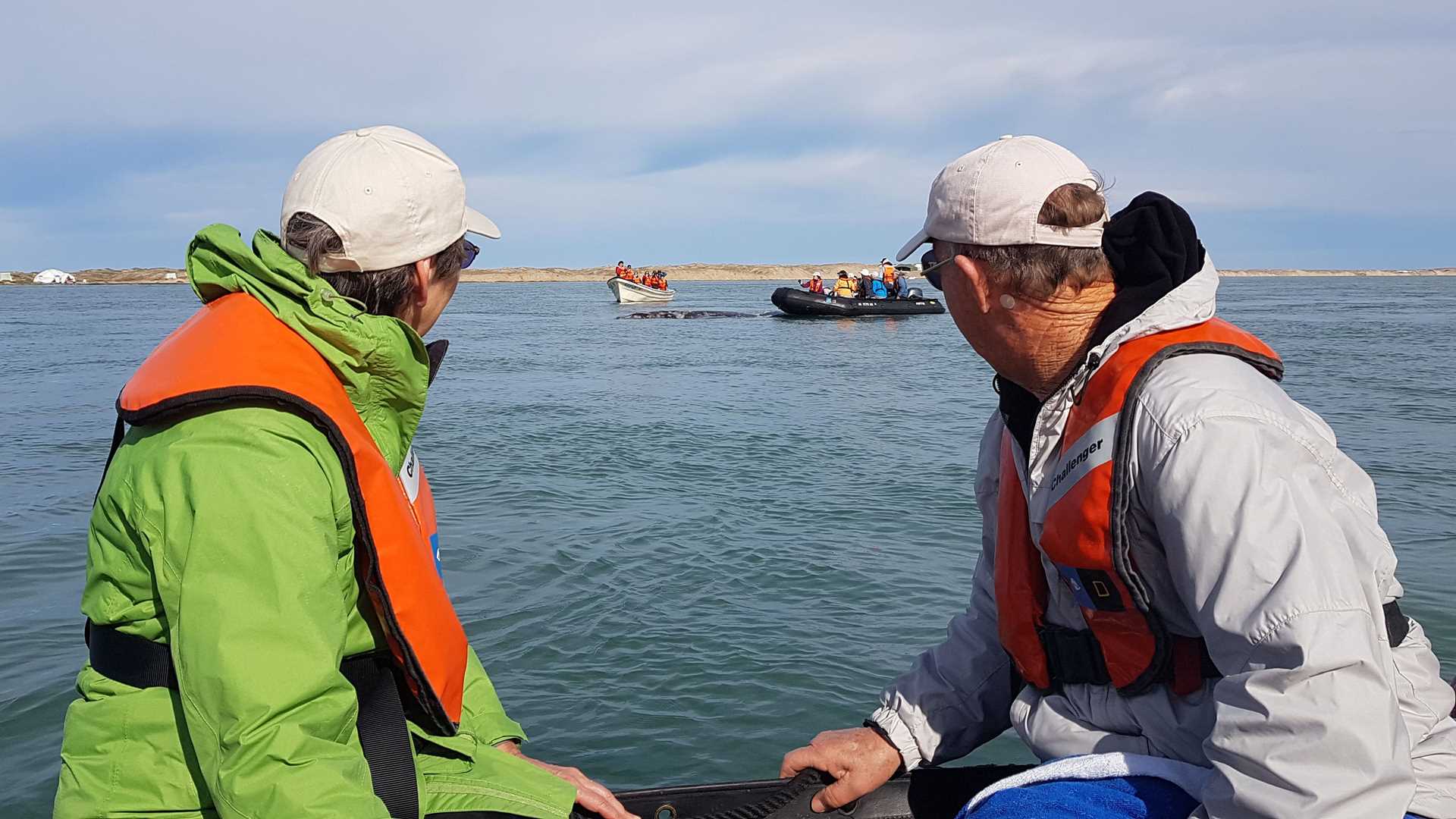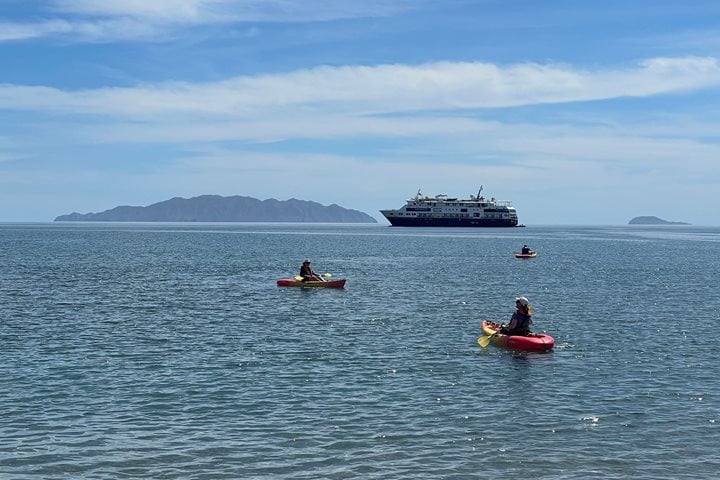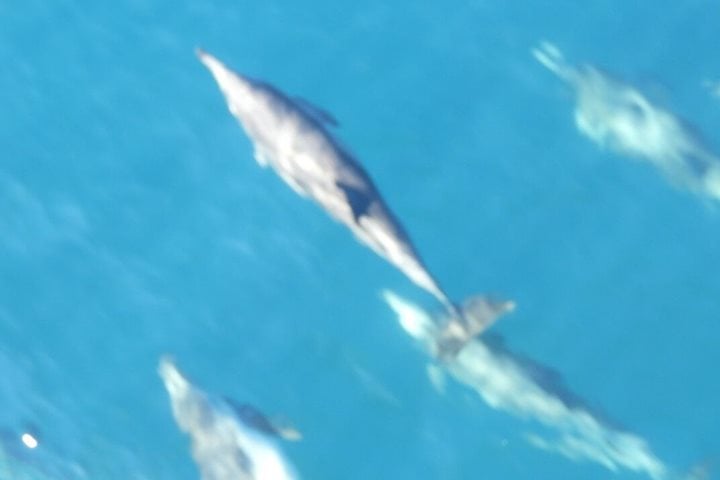The sun rose in triumph over Magdalena Bay, painting the dunes and water with a shimmering light. Off the bow of National Geographic Sea Bird, gray whales breathed geysers into the morning air. The tropical depression that had whipped along the Baja peninsula for many days was gone, and the waves that raged yesterday morning were replaced by gentle ripples of an ebbing tide.
After breakfast, we loaded expedition landing crafts for our fifth and final excursion into the heart of the bay: the gray whale calving lagoon. All boats were filled, and the excitement was palpable. Whitewater streamed to either side of our bows and we watched the horizon for spouts, spy-hops, and the knuckled gray backs of our cetacean companions.
Twenty minutes in, we spied a double spout. It was a cow-calf pair—a female gray whale with her baby. We cruised gently over toward the two animals, watching them rise to the surface to breathe again and then disappear. For some time, we searched for them in vain, when suddenly two pairs of flukes dove less than 50 feet off of our boat! The whales were being coy.
Not far from the mother and her young, another adult gray whale did a series of spy-hops, raising its head vertically out of the water to take a look around. We followed the glassy prints left by the whale on the surface of the bay, ovoid steps of some primordial oceanic giant leading us on an adventure.
As the giant steps slowly retreated, our local guide turned the expedition landing craft in the direction of a small gathering of panga boats, indicating a potential interaction with a wild gray whale. Despite being hunted as recently as the 1950s, gray whales have been known for decades now to approach small craft out of benign curiosity, giving visitors to the Baja peninsula an unparalleled experience to connect with an untamed animal.
Our interaction didn’t disappoint. For the next hour, the whale drew us into a game in which it floated, apparently listlessly, near the surface. Our group of boats—which soon included the other expedition landing craft from National Geographic Sea Bird—cautiously drew near, giving the whale space to maneuver and make the final call as to how close it would approach. Once we were in position, the whale rolled and swung its enormous flukes from side to side, like a tail wag from an enormous dog. We laughed and called out excitedly between boats as the animal approached one boat, then another, splashing at engines and diving so close that its exhales sometimes covered the faces of onlookers.
The roiling ocean, the relentless winds, the wet and cold of the previous day’s excursions—all was forgotten in the face of interacting with such awe-inspiring creatures. This is what drew us to the windswept Pacific dunes of a sparsely inhabited desert peninsula, plying the waters of a bay long used by an intelligent species that—for a few unforgettable minutes—is willing to share part of its life with us; a cross between two alien worlds. These experiences are what expeditions are made of.









